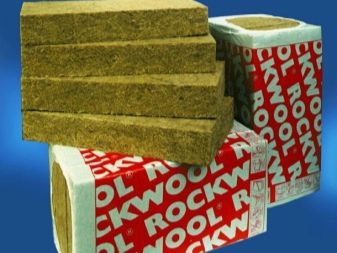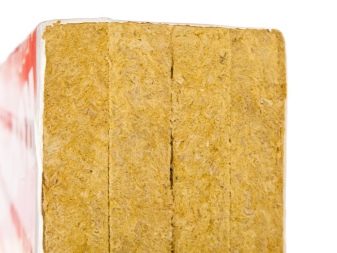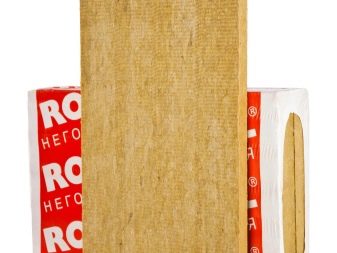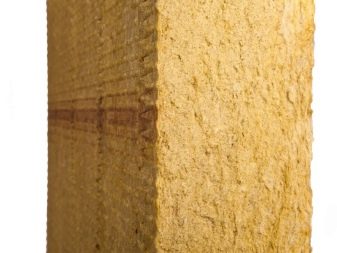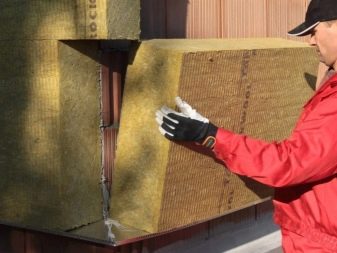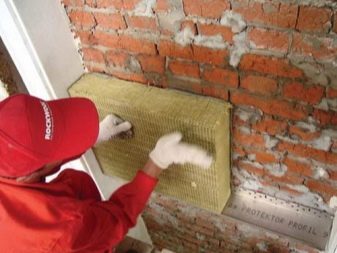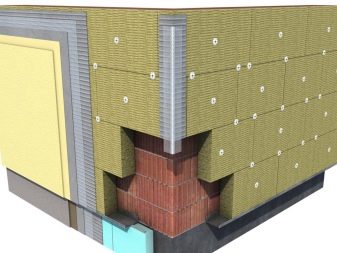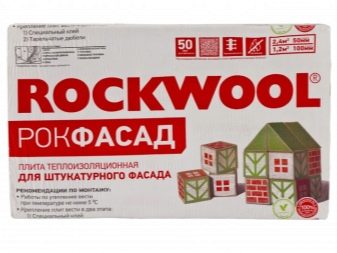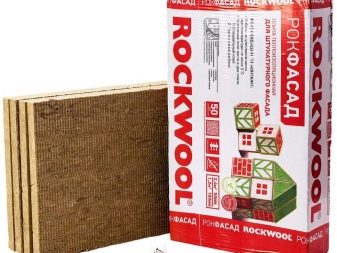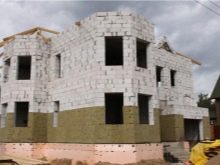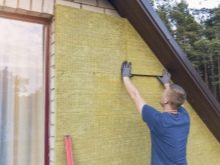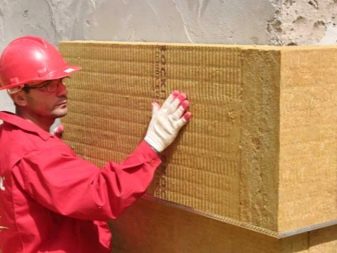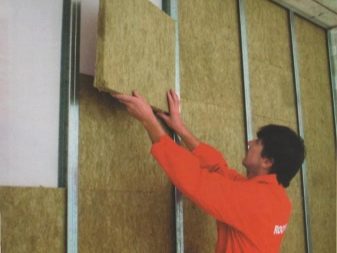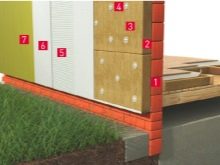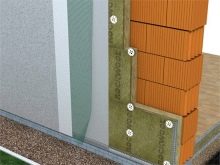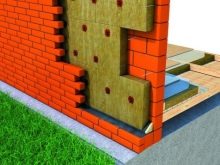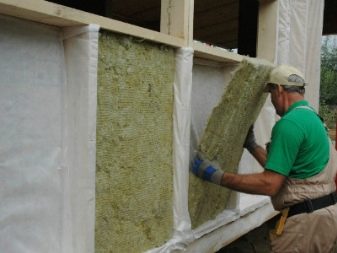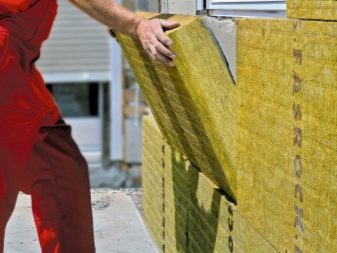Features of Rockwool "Facade Butts" Mineral Slabs
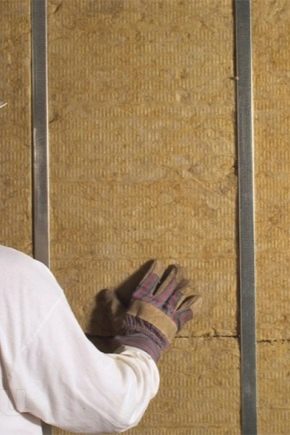
Among the wide variety of materials intended for the insulation of external walls, the products of the Danish company Rockwool, represented by the Fasad Butts series of hard slabs, stand out. The main feature of the materials in this series is that they are not only good insulants, but also a base for applying finishing decorative plaster. At the same time, mineral wool plates do not require additional processing and reinforcement before finishing.
Main characteristics
Insulation from Rockwool is a tightly compressed gabbro-basalt fiber, obtained in the process of thermal effects on rocks.Fibers are arranged randomly in relation to each other, tightly intertwining. Also, water-repellent components and binders are added to the insulating material. As a result, mineral wool plates acquire characteristic features.
The main characteristic of stone slabs of the series is the combination of high density and strength with low weight, which facilitates installation and does not create additional load on the foundation.
The stone fibers that form the basis of the material make it resistant to any mechanical stress.they are not biodegradable. This means that neither mold nor rot (one of the most dangerous “pests” for building materials) do not form on the slabs. In addition, the hard fiber plates are “too tough” for rodents.
The most common plate size is 1000x600x50mm, but the assortment includes materials 1200 mm long, 500 mm wide and up to 200 mm thick.
Scope of application
Thermal insulation plates "Facade Butts" can be used:
- on facades of any type;
- when arranging firebreaks outside the building;
- for framing window and door openings.
At the same time, Rockwool mineral wool is suitable for building insulation, regardless of their complexity, height and fire resistance. Heat insulation is also successfully applied in the reconstruction of buildings that require the reconstruction of the architectural features of the time of construction.
Types of products
The range of heaters in this series is represented by four brands of plates.
- "Facade Butts D Extra" - insulation, consisting of two layers of different density. At the bottom layer this indicator does not exceed 94 kg / m3, at the top it is equal to 180 kg / m3. The thickness of the hard layer - 25 mm. This combination allows you to simplify the installation of plates without compromising the insulating qualities of the material. In addition, this combination significantly reduces the load on the wall of the building and its foundation. Therefore, such a mineral wool is suitable for warming high-rise residential buildings and office buildings.
- "Facade Butts Optima". Having a density of 110-120 kg / m3, plates with such markings can reduce heating consumption by 40% and provide additional sound insulation in a house or apartment.
- "Facade Butts Extra". Thanks to rigidity and durability, the insulation maintains its geometry for a long time, without being crumpled or broken during installation and operation.
- "The facade of the Butts D Optima." The two-layer construction with a more dense top layer (170 kg / m³) is suitable for the thermal insulation of low houses and public buildings.
All facade insulation materials are attached to concrete, brick and other types of stone walls.
Advantages and disadvantages
The composition and characteristics of the thermal insulation material Rockwool determine a number of its advantages.
- Good heat and sound insulation. In terms of its thermal insulation properties, a 100 mm slab is far superior to a brick wall 1 m thick. At the same time, the plates are able to absorb not only street noise, but also vibrations that occur in building structures.
- The porosity of the material. Due to the porous structure, while maintaining heat, stone wool does not prevent the passage of steam and condensate from the room to the external environment, allowing the walls to "breathe". It is important that the mineral wool fibers themselves do not absorb moisture, as they are impregnated with a water-repellent compound.
- Durability. Even after the time the plates do not shrink and are not deformed. Therefore, such insulation can serve up to 50 years without loss of its operational characteristics.
- Fireproof. The material belongs to the category of non-flammable.Even with strong evaporation and a temperature of 1000 ° C, basalt fibers do not ignite and retain their shape.
- Simplicity and ease of installation. Sheets can be laid in various directions.
- Environmental Safety. Despite the fact that the mineral wool contains synthetic substances that serve to bundle the other components, the insulation is considered to be completely environmentally friendly, which is confirmed by the EcoMaterial Green certificate.
- Versatility. Basalt insulation can be installed under the plaster, and under the siding. It is also suitable for arranging other types of ventilated facades, it can be pasted on ceramic tiles.
- Range. A variety of products allows you to choose the best option for each case.
The number of disadvantages of basalt insulation often include its relatively high price. Although it is obvious that the high technical characteristics of the material are worth paying more for them. Also, the disadvantages of Rockwool materials include the need to align the walls before installing them. This is due to the high rigidity of the plates.
Installation
Despite the fact that wall insulation with the help of “Facade Butts” materials is a fairly simple process, during its implementation it is necessary to take into account a number of nuances and follow certain rules.
To increase the efficiency of the heat insulator, it is necessary to install before installing mineral wool;
- remove old wall covering and building materials from the wall;
- level the surface (maximum tolerance - 1 cm for every 2 m);
- clean the surface from dust;
- process the wall with a primer.
The plates of Rockwool are attached to the glue. The ideal solution would be to use the adhesive composition of the same manufacturer. PWhen applying, the adhesive is first carefully rubbed into the mineral wool panels with a spatula, and then additionally applied with a thick strip around the perimeter. (retreating from the edge of 2-3 cm), and in the form of small points to other parts of the plate (there should be at least 5 glue points).
Immediately after applying the adhesive, the material is applied to the wall. Begin installation with the installation of insulation on the base profile, which is located 60 cm from the ground.
When installing it is necessary to avoid coincidence of the lines of joints and slopes, therefore, experts recommend to think out a plan for placing sheets in advance.
After the adhesive composition grasps, the glued insulation is additionally attached to the facade with the help of dish-shaped dowels. This is done not earlier than one day after installation, but not later than after 3 days. At least five nails should be used for each slab element. (the usual placement is in the center and at the corners), but, as a rule, the number of fasteners depends on the thickness of the material and its location. Screw the dowels 10-15 mm deeper than the thickness of the insulator.
As a finishing finish, decorative plaster is applied on the insulating plates in 2 layers.
It is important to remember that the insulation "Facade Butts" - a specialized material designed specifically for insulation of external walls. Therefore, it is not recommended to use it for other purposes (for example, to insulate roofs or floors), although in some cases such an application is still justified.
Reviews
For the first time the rigid insulation Rockwool appeared on the construction market more than 20 years ago. During this time, he managed to gain popularity among both professionals and those who repair and insulate their homes on their own.
Many buyers in their reviews say that after installing insulation from a Danish company, the consumption of resources spent on heating a house has decreased significantly. Accordingly, financial costs have decreased. Also reduce the cost of the insulation works themselves allows the fact that the decorative plaster when finishing walls can be applied directly to the insulation, without the use of additional materials. In addition to reducing costs, it allows you to speed up the work on the weatherization of the house.
This is especially true for those who, having no experience, make installation on their own.
However, the most important advantage of building material is its durability. Those who installed the Facade Butts slabs among the first (when the products first appeared on the Russian market) still do not know the problems with thermal insulation. It is noteworthy that due to the qualities of the heat insulator and the finish on it lasts much longer.
You will learn more about Rockwool Facade Butts products in the following video.
